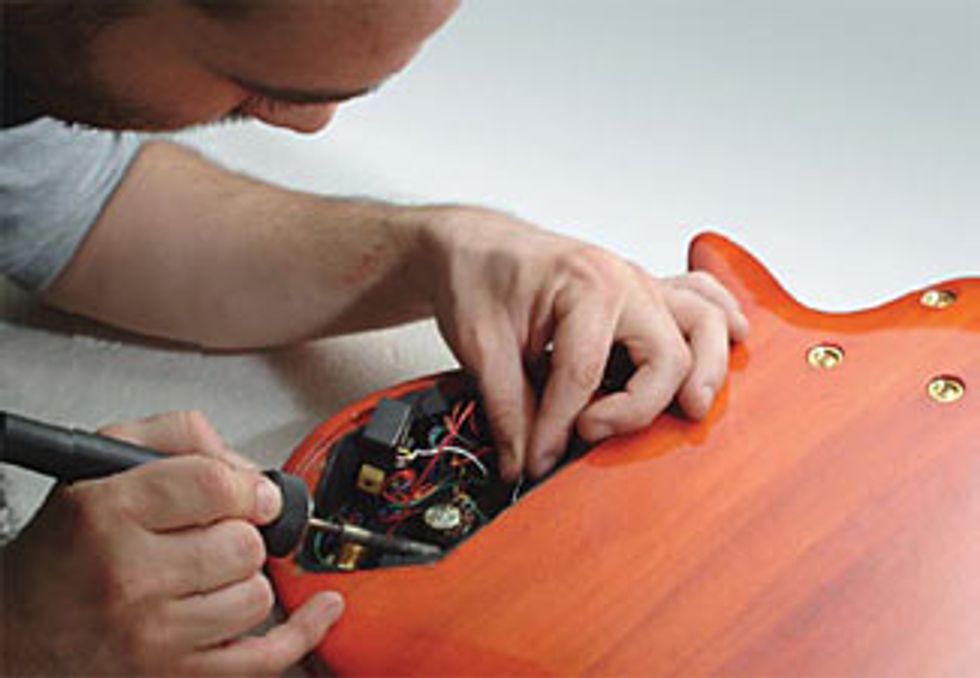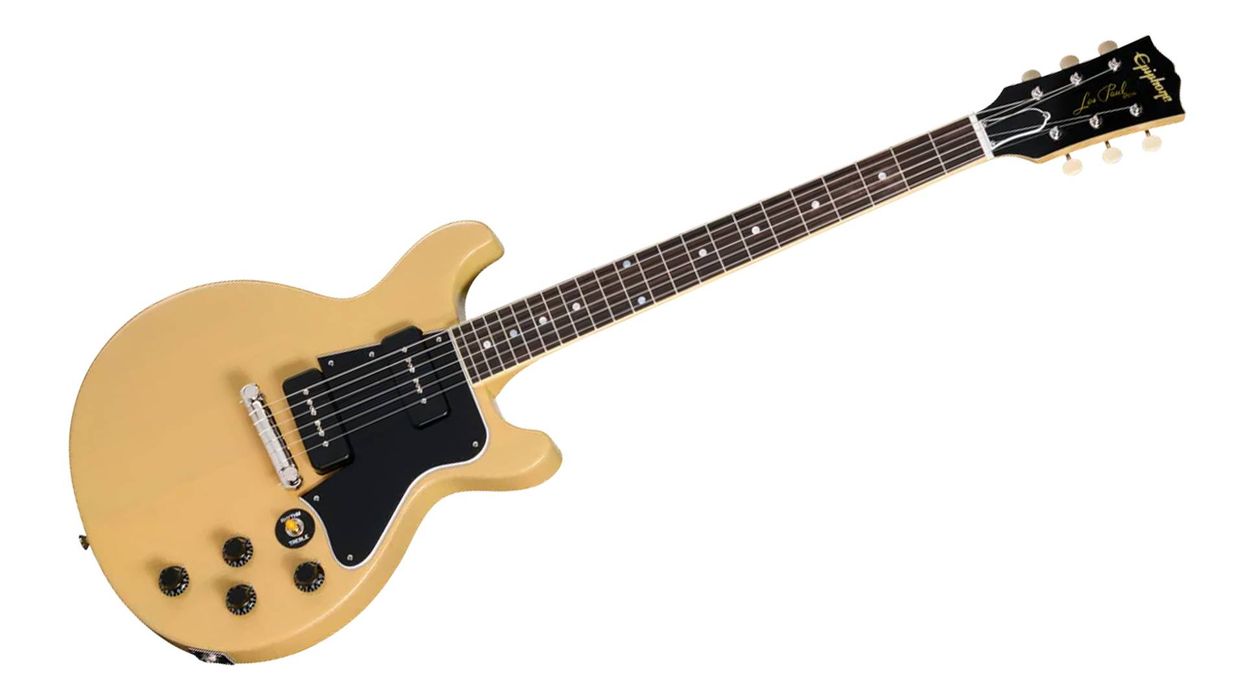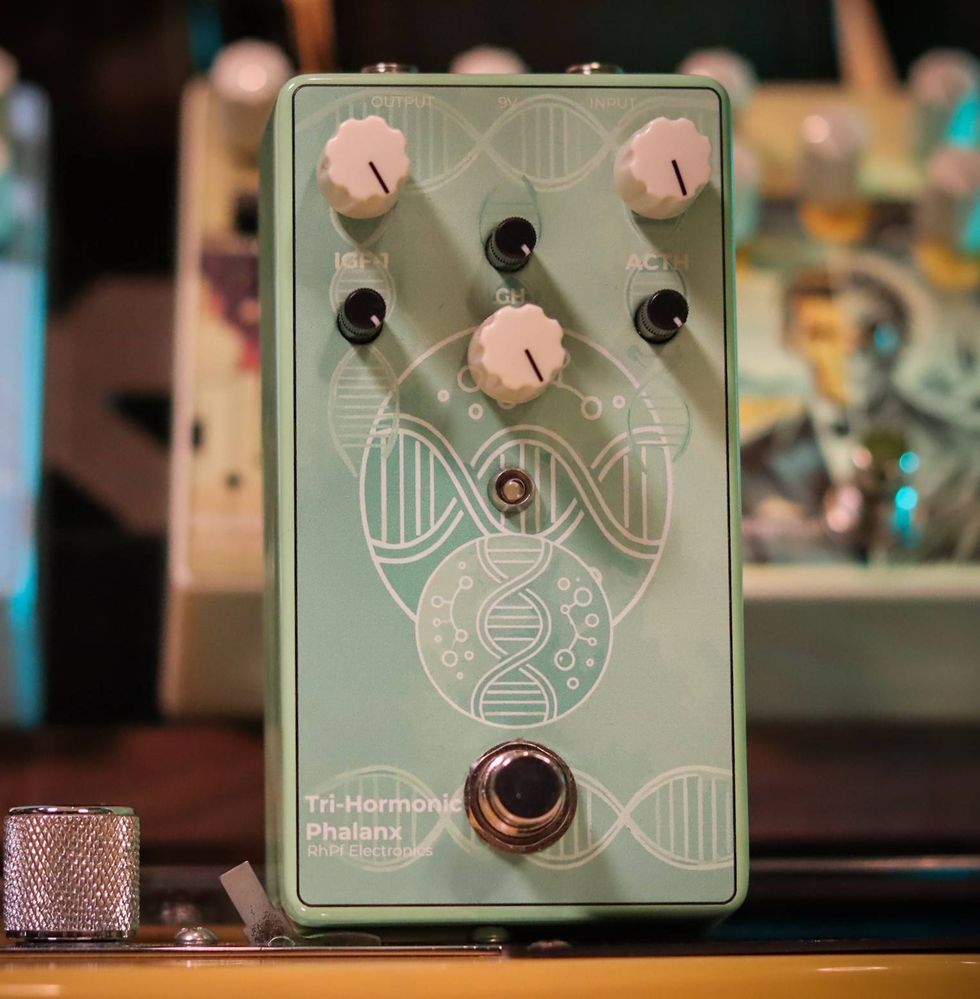 Have any of you noticed lately that there has been an awful lot of chatter everywhere from message boards to guitar shops about how critically important components on your guitar can -- and will -- affect your tone? It has reached such fervor that players have been routinely swapping out stock parts for everything from special capacitor brands and values to custom-made bridge assemblies. In years past, I pled guilty to automatically changing tuning keys, potentiometers and numerous other parts on my newest guitars before I really listened to the guitar, as it was delivered from the factory. Today, I look a bit more globally at each instrument to ascertain whether it’s a keeper from the moment I play it in the music store. What this means to me is that the guitar will not be missing anything or needing any modifications other than a quick truss rod tweak and the obligatory string change before it goes home with me or one of my friends.
Have any of you noticed lately that there has been an awful lot of chatter everywhere from message boards to guitar shops about how critically important components on your guitar can -- and will -- affect your tone? It has reached such fervor that players have been routinely swapping out stock parts for everything from special capacitor brands and values to custom-made bridge assemblies. In years past, I pled guilty to automatically changing tuning keys, potentiometers and numerous other parts on my newest guitars before I really listened to the guitar, as it was delivered from the factory. Today, I look a bit more globally at each instrument to ascertain whether it’s a keeper from the moment I play it in the music store. What this means to me is that the guitar will not be missing anything or needing any modifications other than a quick truss rod tweak and the obligatory string change before it goes home with me or one of my friends. Let’s face it; most of the time you will instantly know when you’ve found your next Holy Grail. When that siren calls, it just feels right! Your dream guitar (for that day, anyway) will usually have the perfect tonal balance for your style, and more often than not the neck will fit perfectly into your hands. It is where everything comes together in complete harmonic convergence. But once we have that perfect instrument in our hands, what should we do next?
As hard as it may be to hear, you’ll most likely want to leave it alone. Of course, there are always exceptions to that rule, but remember, there’s a reason you bought it in the first place. Modifications have the distinct possibility of changing that gorgeous tone. For example, have you ever thought about what adding more mass to the headstock can do to the tone? The true answer is that the pure, angelic tone of said instrument will change, and, in many cases, not for the better. I’ve found that even swapping the tuning keys out in favor of a sturdier, heavier type can alter the sound of your instrument in a profound way.
If you’re inclined to go with what you know and you want to modify that new axe, I’d highly advise sticking to completely reversible modifications. The big problem with changing tuning keys lies in the fact that the old stock tuners always seem to have an entirely different screw pattern, leaving the guitar with visible holes unless you dowel them up afterwards. If you do decide to dowel up those old screw holes, they can be difficult to remove if you want to switch back to your original set of tuners, and then you’ll have to deal with the second set of screw holes from the modification. By that point, you’ll probably be wondering why you even bothered in the first place.
Likewise, we mentioned that bridge saddles and the materials they’re made of can drastically affect a guitar’s tone. Let’s say you’ve found a stellar sounding Les Paul that originally came equipped with those stock metal bridge saddles. While it may be tempting to change them, if this Les Paul really sounds as fabulous as you think it does, leave those stock saddles alone! It’s absolutely amazing how these small pieces of gold-plated metal can affect the tone. Additionally, if the guitar stays in tune with the stock keys and the stock saddles are not popping strings, you’ll only have to maintain those parts so they stay trouble-free.
Even the smallest changes can affect your tone. For example, it’s been long acknowledged that authentic bone nuts (and bone saddles, for that matter) can provide superior ring and longer sustain for acoustics, but have you ever thought about the six bridge pins behind the saddle or the end pin contributing to the sound of an instrument? Newer acoustic guitars usually have plastic bridge pins and end pins, which absolutely rob the tone. Switching over to bone or ebony will restore that vibrant tone. When I first heard these alterations done to my favorite little Martin 000- 16, I couldn’t believe my ears – the effect the new end pin had was mind-boggling! The Martin’s volume seemed to almost double, and the guitar became very explosive and dynamic.
Of course, not all modifications are detrimental. My favorite alternative saddles are made by Graph Tech Guitar Labs, and my favorite material for cutting nuts (again, only if the guitar requires it) is real, fossilized Mammoth tusk ivory. It’s hard to find and fairly expensive now, but definitely well worth it – and these nuts work great on electric guitars, too. Learning about various materials is a wonderful start in the art of voicing any guitar the way you want it. That said, I believe the magic comes when you don’t have to do anything but play an instrument as it is. I have several “bone stock” guitars in my collection that I would never make any changes to – period. Be choosey; it’s a lifetime of pleasure! We’ll see you next month.
Dean Farley
Dean Farley is the chief designer of "Snake Oil Brand Strings" (www.sobstrings.net) and has had a profound influence on the trends in the strings of today















